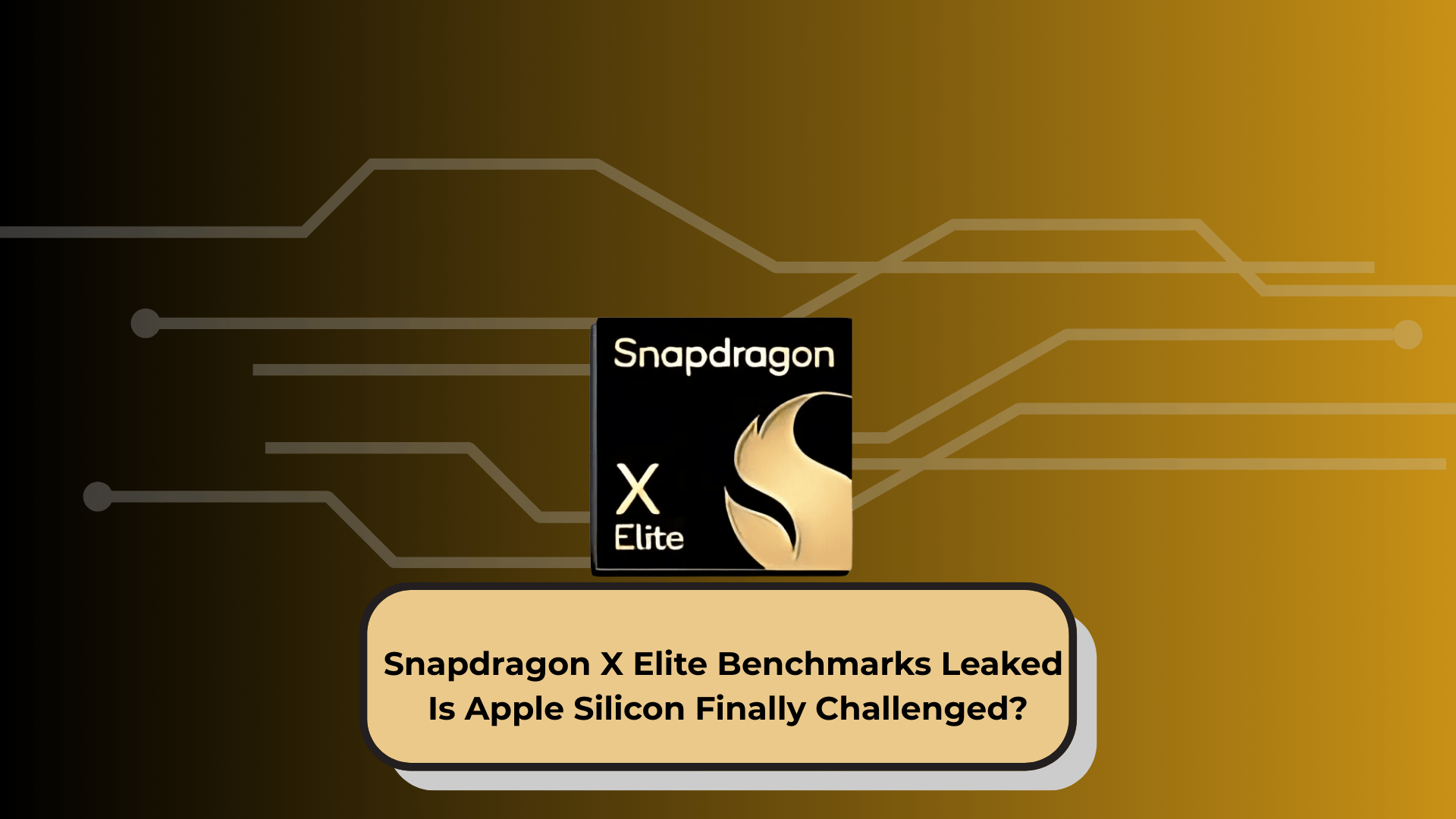In the competitive world of laptop processors, Apple’s M-series chips have ruled the performance and efficiency game for years. But now, Qualcomm’s Snapdragon X Elite might be changing the narrative. Recently leaked benchmark scores suggest that Qualcomm’s new silicon could seriously challenge Apple Silicon, especially in the emerging class of AI-powered Windows laptops.
The Snapdragon X Elite: A New Era for Windows Laptops
Qualcomm’s Snapdragon X Elite is not just another ARM chip. Built on a custom Oryon CPU architecture, this processor is designed specifically for next-gen Windows laptops, focusing heavily on AI acceleration, power efficiency, and high-performance multitasking.
The chip boasts:
- 12 high-performance cores (no efficiency cores)
- Up to 3.8 GHz base clock, and dual-core boost up to 4.3 GHz
- Integrated AI Engine with 45 TOPS (Tera Operations Per Second)
- Support for LPDDR5x memory and on-device AI processing
What sets the Snapdragon X Elite apart is its ambition. Qualcomm is positioning itself not just against Intel and AMD, but directly against Apple’s M-series chips, especially the M2 and M3.
Leaked Benchmark Results: What Do They Reveal?
Early leaks from Geekbench and internal test builds reveal promising figures:
- Single-core score: Approaching Apple M2 levels
- Multi-core score: In some cases, exceeding the M2 and approaching M3 performance
- AI task benchmarks: Snapdragon X Elite reportedly outperforms Apple’s Neural Engine in specific workloads, particularly in real-time translation, image generation, and speech processing.
These figures suggest Qualcomm is closing the performance gap while possibly delivering better energy efficiency on Windows machines.
Apple’s Advantage: Ecosystem and Optimization
Despite the impressive benchmarks, Apple maintains a key advantage in tight vertical integration. The synergy between macOS and Apple Silicon enables ultra-efficient performance that is hard to replicate across multiple OEMs using Windows.
Moreover, the macOS ecosystem is heavily optimized for Apple hardware, offering smooth workflows, battery life, and thermal control. Snapdragon-powered Windows machines need strong OEM support and software optimization to compete meaningfully.
The Real Battleground: AI PCs
Its integration with AI-native features makes the Snapdragon X Elite particularly relevant in 2025. Microsoft has been pushing for the AI PC revolution, with new versions of Windows supporting real-time AI functions like Copilot, intelligent summarization, and AI-based performance tuning.
Snapdragon’s dedicated Hexagon NPU could give Qualcomm-based laptops a significant edge in handling these tasks natively on-device, reducing reliance on the cloud.
What’s Next?
With the first Snapdragon X Elite laptops expected to launch by mid-2025, tech enthusiasts and professionals alike are eager to see whether this chip can finally bring real competition to the Apple Silicon era.
Qualcomm and its partners can match performance with thoughtful hardware design, thermal efficiency, and strong AI software integration. In that case, 2025 might be the first year Apple’s M-series feels real pressure, and Windows laptops could finally make a strong comeback in the premium space.

